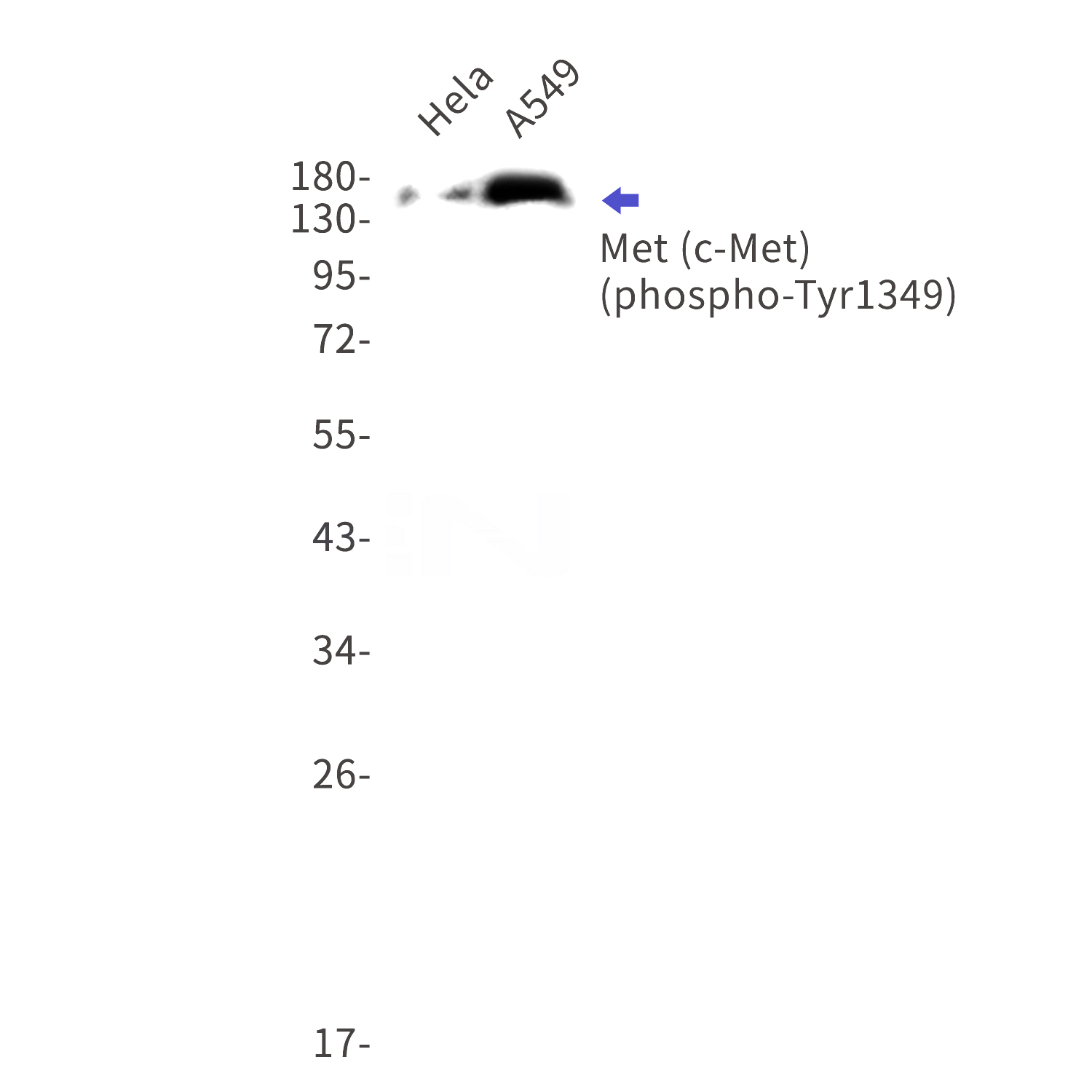-
Product Name
Anti-phospho-Met (c-Met) (Tyr1349) Rabbit antibody
- Documents
-
Description
phospho-Met (c-Met) (Tyr1349) Rabbit monoclonal antibody
-
Tested applications
WB, IHC-P, IP
-
Species reactivity
Human
-
Isotype
Rabbit IgG
-
Preparation
Antigen: A synthetic phosphopeptide corresponding to residues surrounding Tyr1349 of human Met
-
Clonality
Monoclonal
-
Formulation
50nM Tris-Glycine(pH 7.4), 0.15M NaCl, 40%Glycerol, 0.01% sodium azide and 0.05% BSA
-
Storage instructions
Store at 4°C short term. Store at -20°C long term. Avoid freeze / thaw cycle.
-
Applications
WB: 1/1000
IHC: 1/20
IP: 1/20
-
Validations

Western blot detection of phospho-Met (c-Met) (Tyr1349) in Hela,A549 cell lysates using phospho-Met (c-Met) (Tyr1349) Rabbit mAb(1:1000 diluted).Predicted band size:156kDa.Observed band size:170-140kDa.
-
Background
This gene encodes a member of the receptor tyrosine kinase family of proteins and the product of the proto-oncogene MET. The encoded preproprotein is proteolytically processed to generate alpha and beta subunits that are linked via disulfide bonds to form the mature receptor. Further processing of the beta subunit results in the formation of the M10 peptide, which has been shown to reduce lung fibrosis. Binding of its ligand, hepatocyte growth factor, induces dimerization and activation of the receptor, which plays a role in cellular survival, embryogenesis, and cellular migration and invasion. Mutations in this gene are associated with papillary renal cell carcinoma, hepatocellular carcinoma, and various head and neck cancers. Amplification and overexpression of this gene are also associated with multiple human cancers. [provided by RefSeq, May 2016]
Related Products / Services
Please note: All products are "FOR RESEARCH USE ONLY AND ARE NOT INTENDED FOR DIAGNOSTIC OR THERAPEUTIC USE"
